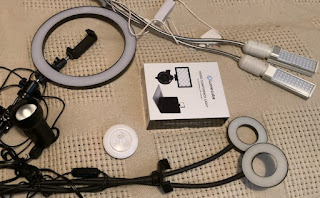Rules for Boundaries: Your Mom-lecture for the Day
- Realise that you have them. You always have had them; your first set was probably handed to you by adults you trusted as a child. This may or may not be problematic: the boundaries you were given may be inappropriate for you or you may have outgrown them. I'll give a personal example: I was taught that I should sit down, and if somebody wants me to have something they will give it to me. At some point, somebody who'd been handed different boundaries laughed at me and said, "If you want something, you have to ask for it," and was amazed that I didn't know this. Now we arrive at the next rule.
- Do not weigh or judge the boundaries of others. It may be best to start thinking of boundaries as an invisible buffer zone. If each person is surrounded by a magnetic field, eventually we will run into someone and bounce off them, or run into someone else and click. The person you bounce off may or may not be incorrect, and the one you click with may not be okay. They may have built that shield themselves, or it may have been given to them by some adult they trusted as a child. Their boundary is not your problem; it's theirs. This brings us to the next rule.
- Your set of boundaries is your problem. This is why it's important to realise you have them. Identify them, and then calculate very carefully whether they serve you. You might be serving them, which is never a good idea. They aren't actual entities and they are not the boss of you. Know what they are, know their value, and move on to the next rule.
- Build a set of boundaries which works for you. You are the master of your ship, and you are in charge of its care and maintenance. Boundaries are a set of implements in your tool box. If they don't work, Get rid of them. Now, if not yesterday. This isn't going to be as easy as getting rid of the jeans you are saving for when you lose weight. If you've accurately identified the faulty boundary, though, you can modify it by modifying your reactions every time the boundary is triggered. If you can't quite identify the faulty boundary, at least identify the trigger-action. Stop what you're doing and pay attention to it, like it's an annoying child. Listen to its complaint, and then tell it, "No. You are not correct." Eventually you will have the space available to build a healthy boundary, one that isn't jarring when it bumps up against another one.
- That is the goal: to not be jarred when your boundaries conflict with others. Conflict is okay and sometimes encouraged, but it shouldn't knock you off your route. It shouldn't harm one party or the other. This is the only measure you are allowed: does this conflict of boundaries cause harm? If so, back up a bit. Leave an additional buffer zone to explore together, or not. Leave room to grow, for yourself and for others, but don't leave a potential safety leak.
There's more flexibility and also more grey area with a nonphysical boundary-crossing. Be as direct as you can comfortably be. Anne suggests something like, "I appreciate you asking, but this isn't a subject I can talk about." If that is too direct for you, find a way to politely remove yourself from the discussion. Now, let's role-play. What's the direct approach? The covert? The right answer is the one that works safely for you.
- You're at the water-cooler, filling your glass. The next coworker in line is right at your elbow and talking into your head. You instinctively take a side-step, but the coworker steps forward, too.
- Your buddy suddenly takes offense to something she's never complained about before.
- You're on the subway, seated; maybe you are a female. It's rush hour. A man crowds into a vacancy, holding the grab-bar, and his junk is right in your face.
- At lunch, a friend is making a move toward your french fries.
- Sitting at a bar, the person next to you introduces himself, and shakes hands. And then also touches your arm, and also your leg.
Further reading:
Understanding Validation: A way to Communicate Acceptance
An article in Psychology Today - Karyn Hall, Ph.D. walks us through the six levels of validation identified by Marsha Linehan Ph.D., as well as several types of invalidation. Yay for Science Chicks!
Big Data for Humans - Why Data Visualisation is Important
This article explains why your brain likes it when I tell you that boundaries are tangible things like magnetic fields. Helped, right? I know.
Verbal De-Escalation Techniques That Actually Work
Here are some useful Aussie anti-talking points that really deserve their own blog post. Thank you, Security Solutions Magazine. Also, thank you to Gon-gon who taught me some of these skills and old sayings.











Kilari mangas et dessins anim?s japonais.
ReplyDelete'Zat you, Shecky?
ReplyDelete